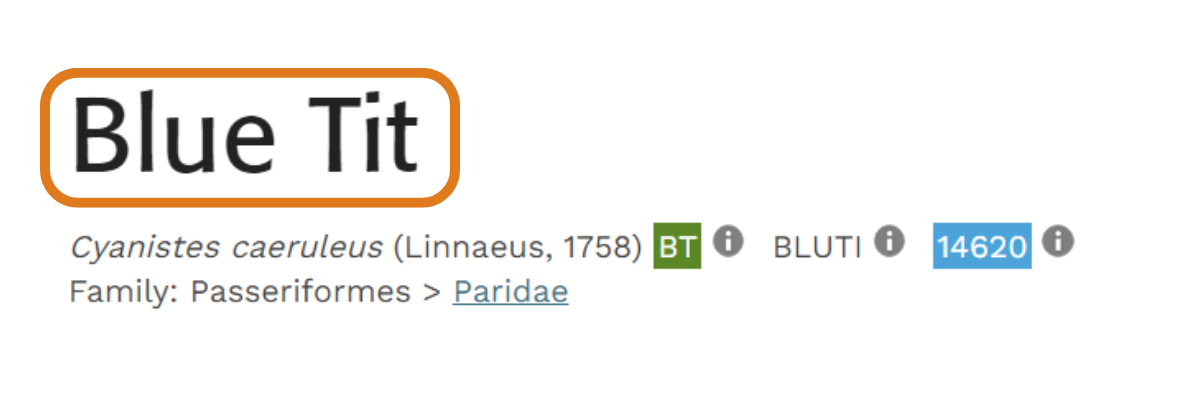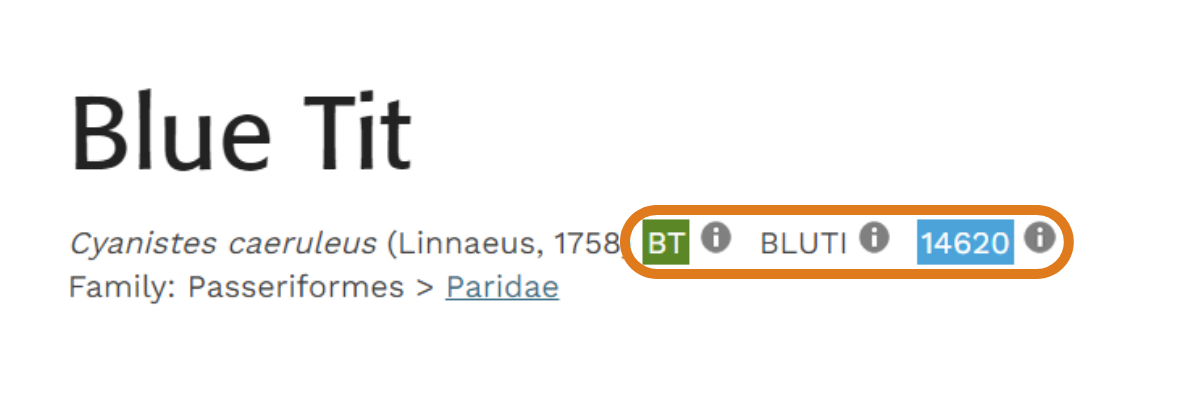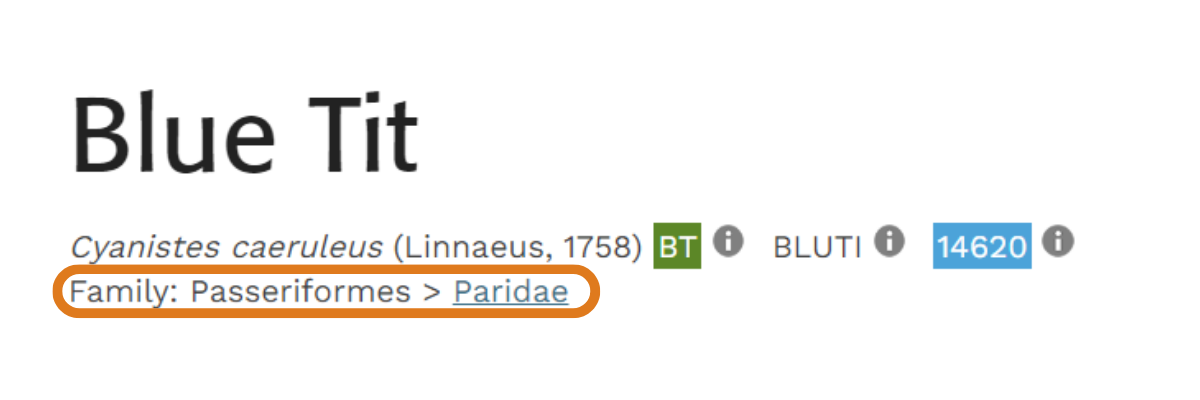Species information
English name
In the largest font, you will find the species’ common name, as regularly used in the UK. Increasingly, there is a move towards 'standardised' English names, which usually means adding appropriate epithets to the more commonly used colloquial names (e.g. Avocet becomes Pied Avocet, to distinguish it from other Avocet species).
In general, BTO follows the taxonomy and species naming conventions recommended by the International Ornithological Congress (IOC, version 13.1) except where these deviate significantly from names in common usage in the UK.
Scientific name
Below the English name is the species’ scientific name, shown in italics. The scientific name is followed by the name of the person who first described the species with a scientific name (and the year the description was published).
Scientific names comprise two parts: a generic name, which refers to a small group of closely related species, and a specific name. Together, these two names uniquely identify the species.
Species Codes
Next come a series of codes used to succinctly describe the species. These short-hand codes are useful for recording observations in the field, and later for entering and storing data in databases. Using standardised codes also helps to ensure compatibility between different recording systems, which means data can be exchanged between individuals and organisations seamlessly.
BTO and partners use three main coding systems:
- BTO 2 Letter Code: this is designed primarily for use in the field as a quick way of recording a species on maps. For common species the second 'letter' is a dot to represent a blank space, e.g. Blackbird is 'B.'. As there are a relatively limited number of combinations possible, codes are only available for species regularly occurring in the UK.
- BTO 5 Letter Code: this code is used primarily by the British and Irish Ringing Scheme. It provides a code for each species occurring in the UK, plus those that breed in Europe as listed by the second European Breeding Bird Atlas. In general, the code is formed from the first three letters of the first name and the first two letters of the second name (e.g. BEArded TIt is BEATI), or the first five letters of a single word name (e.g. GOLDFinch is GOLDF) but there are some exceptions. For example, Blackbird's code is BLABI, not BLACK.
- EURING Code: this is a numeric code used by ringing schemes throughout Europe for data exchange. Each species is assigned a five-digit number. The last digit is generally zero; this reserves it for different subspecies, so when a taxon is elevated to species rank there is no need to change the whole number. You can find more information on the EURING website.
Bird order and family
Lastly, in the species heading information, we provide the ‘order’ and ‘family’ in which the species is currently classified. Orders and families are part of the hierarchy which is used to classify all living organisms. Each order is made up of several families, and each family is made up of several genera (the plural of genus). The genus a bird belongs to determines its generic name.
References
- Parkin, D.T. & Knox, A.G. (2010) The status of birds in Britain & Ireland. Christopher Helm, London.









Share this page